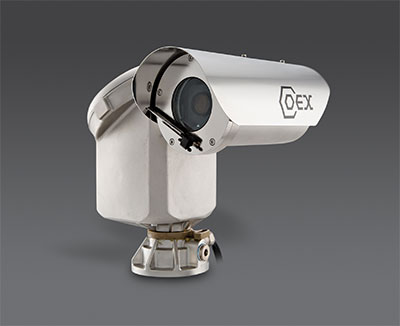CSAus Certification for Synectics' COEX Camera Stations
Synectics’ COEX C-range hazardous area camera stations have been awarded CSAus certification by the CSA Group.
 The C-range camera stations are lightweight, corrosion resistant, are operational in all light/visibility conditions and certified for temperatures ranging from -55°C to +60°C. Fully compatible with a variety of control systems and transmission methods - including IP and fiber optics - they are ideal for security and safety protection in hazardous classified locations in any environment.
The C-range camera stations are lightweight, corrosion resistant, are operational in all light/visibility conditions and certified for temperatures ranging from -55°C to +60°C. Fully compatible with a variety of control systems and transmission methods - including IP and fiber optics - they are ideal for security and safety protection in hazardous classified locations in any environment.
Demonstrating that the range has been tested to U.S. standards for quality, safety and performance, the CSAus certification covers suitability for hazardous area use including locations where flammable gases, combustible dust or easily ignitable fibers and flyings are present.
The official CSAus hazardous area location categories achieved by the C-range are:
- Class I, Division 1, Groups A B C & D
- Class II, Division 1, Groups E F & G
- Class III, Temperature Code T5/T6
Steven J Williams, manager – business development, the Americas, believes this is a significant development.
“Our COEX C-range of PTZ and fixed hazardous area camera stations have a strong international reputation, particularly within the oil and gas market where they protect some of the world’s largest projects, both onshore and offshore,” said Williams. “Achieving CSAus certification demonstrates how well-deserved that reputation is, and gives our C-range the crucial ‘stamp of quality’ that the Americas market requires.”
Other certifications held by the hazardous area C-range include: ATEX, IECEx, IEC, GOST-R, DNV Approved, BS EN ISO: 9001 and CE Compliance. The hazardous area C-range of camera stations is also EMC compliant with: FCC CFR 47 2011 Part 15.107 & 15.109 and Industry Canada ICES-003.
Synectics’ safe area COEX C1000 and C2000 camera stations are CSAus certified for ordinary locations (OrdLoc).